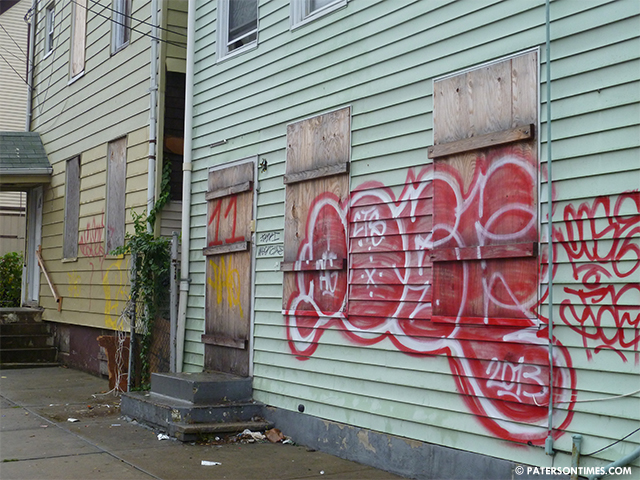Vacant properties have become an issue in the city with hundreds of abandoned properties stationed across the six-wards. “The number of abandoned houses I see,” said Roger Grier, a city resident, “is unbelievable.”
There are more than 968 abandoned properties in the city, according to Lanisha Makle, director of the Department of Community Development, who gave a presentation on what the city has been doing to address the issue.
Makle pointed out that abandoned homes reduce property values for neighbors and it “undermines public safety.” Often abandoned homes become issues for the fire department when vagrants dig through boarded windows and nest inside them; the squatters light fires which sometimes get out of control requiring a response from the city’s fire department.
Besides the fire hazards, vacant houses are sometimes used by drug dealers to hide narcotics, in what are called “stash houses.” These houses then turn the entire area into a drug buying zone, inviting criminals and drug addicts, further deteriorating the neighborhood.
Diane Sterner, community strategies advisor with the New Jersey Community Capital, said the abandoned property problem is not a local issue. “This is a problem that’s become rampant in the State since the recession,” said Sterner. However, it was clear from the case studies of Newark and Jersey City, that the issue is much more rampant in cities than elsewhere.
Two presentations were given during the community forum detailing the steps other cities have taken to reduce the number of abandoned properties in their towns. In Jersey City, where vacant properties became a political issue, the city’s mayor formed a task force to address the problem. “In May 2012, they had 950 properties that were classified as abandoned,” said Jerry Flach, director at Paterson Habitat for Humanity. Flach said the city put together a list of abandoned homes, and began to take notice of vacant properties, contacting the owners and issuing fines for neglecting them. Within a year, more than half of the homes in the list were renovated by their owners.
The city was serious in reducing neighborhood blight, so much so that it issued summons and took some of the home owners to court after they refused or did not respond to citations. Those who did not appear before the court — as is common procedure — a warrant was issued for them, resulting in arrests. “Jersey City has made arrests,” said Flach.
Similar efforts undertaken in Newark, yielded identical results. Owen Fletcher, coordinator at the Housing and Community Development Network of New Jersey, gave a presentation discussing the strides that city made in addressing the same problem. Fletcher said, there were hundreds of abandoned properties in the city, but after a list was compiled and the city took a serious posture, 258 homes were rehabilitated and 61 were demolished.
The message from the organizers of the forum was clear: similar measures undertaken in Paterson will produce the same results. Sterner said, the Abandoned Property Rehabilitation Act, a law that was passed in 2004, allows faster foreclosure of properties that are tax delinquent, in need of rehabilitation based on the assessment of a public officer, and have become a nuisance in the neighborhood.
Sterner mentioned a number of things that residents and the city can do to reduce the number of abandoned properties. The municipality can use eminent domain to take over blighted properties, and in partnership with other organizations like Habitat for Humanity, renovate them.
In Jersey City the effort resulted in more revenue for the city which collected $240,000, by fining neglectful property owners. In Paterson, since the city passed stricter laws two years ago, the city collected more than $60,000. Makle said, the city has a list of abandoned properties, but it has yet to seriously go after the problem as the aforementioned cities have.
“I counted 22 abandoned houses on one block,” said Grier. “That’s on Godwin Ave, that block is only 3 blocks long.”
Grier said some of these properties have been that way for more than five years. Ruby Cotton, the 4th Ward councilwoman, who was in attendance, said she hopes to use some of the tools that were presented, like the designation of properties as abandoned, and foreclosing on them within six-months as opposed to waiting perpetually. Cotton said she hopes to hold a community forum to address some of the abandoned property issues in her ward in the future.
